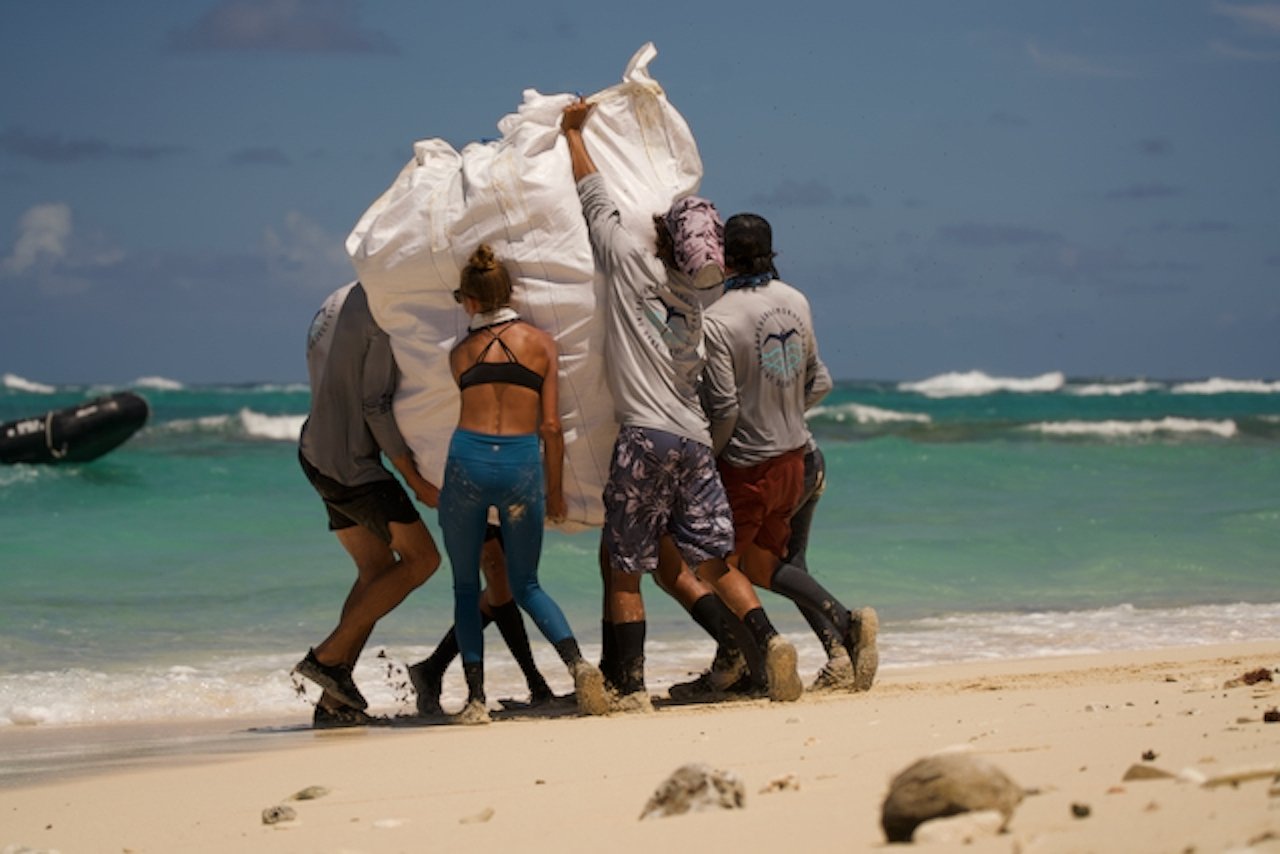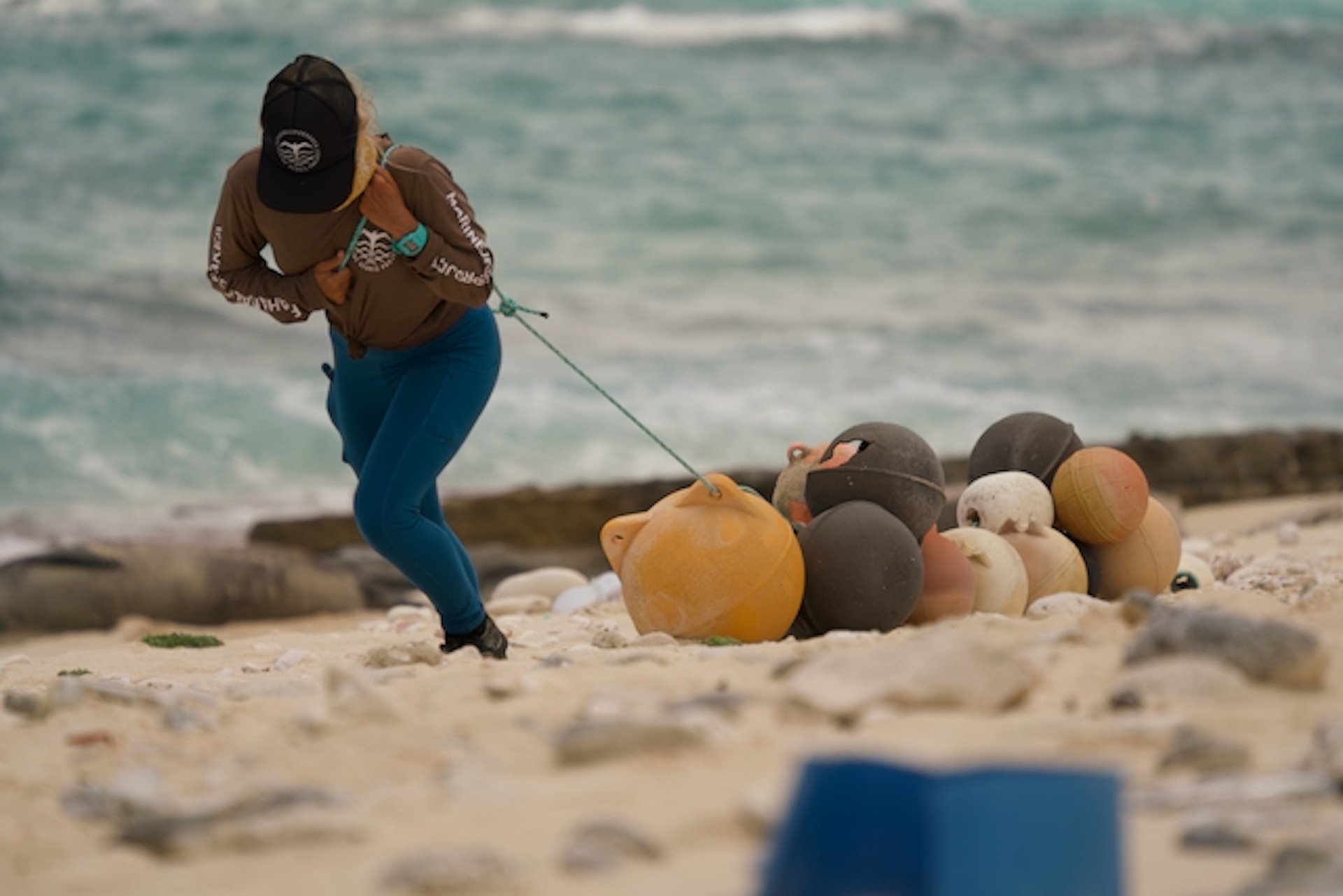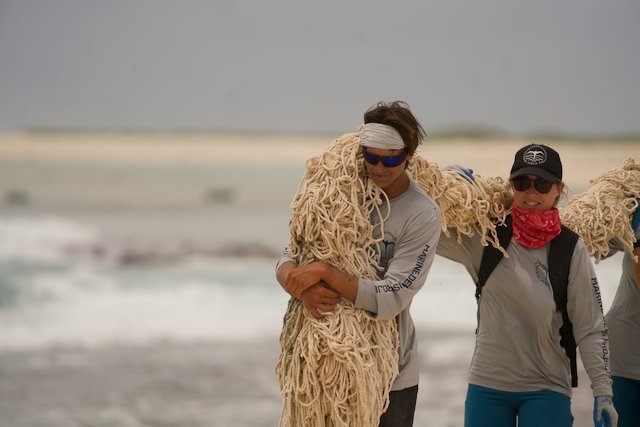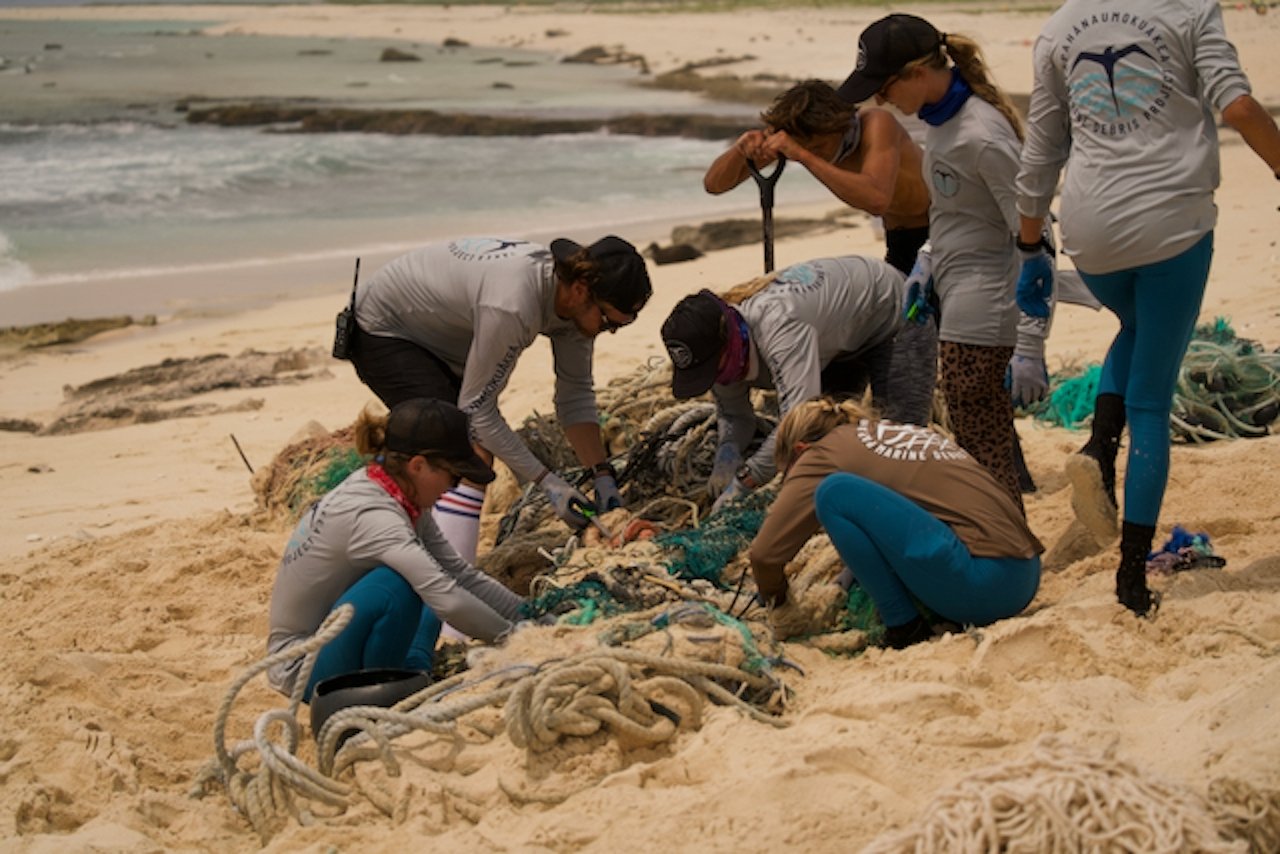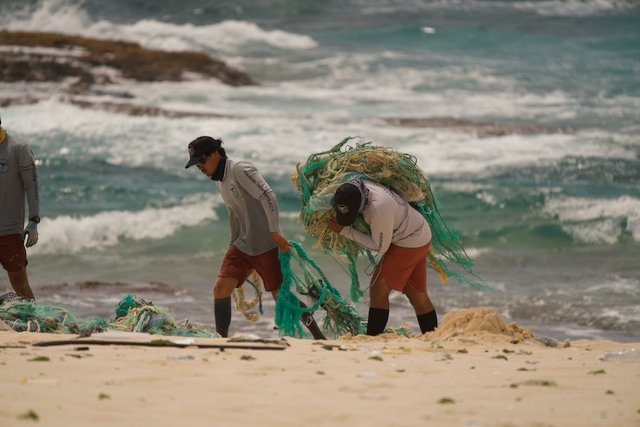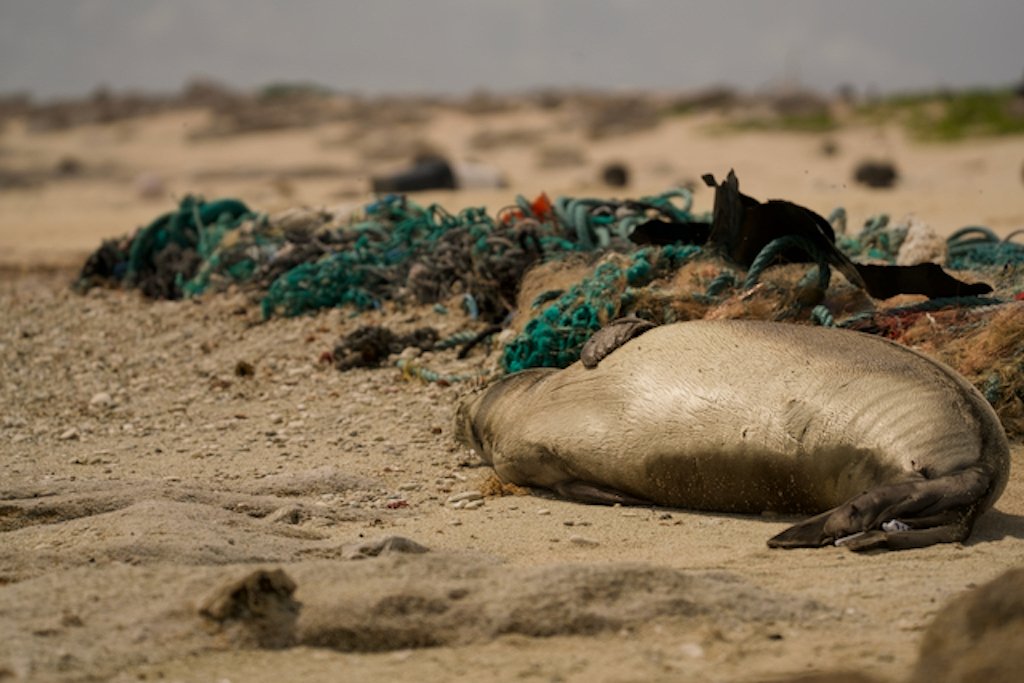How to Eat an Elephant
One Bite at a Time
July 20th, 2022
How do you eat an elephant? This is the thought that kept entering my mind as we approached a monstrous 1,000 lb net that was deeply embedded in the sand and surf. The answer? One bite at a time.
We arrived at Kamole (Laysan Island) at 9:00 am eager to start our day. After a series of bad weather and unforeseen delays that held us back a few days, all we wanted to do was work. That’s one of my favorite things about this crew – our enthusiasm to grind away and pull net. The sun was shining, and we were blessed with a beautiful morning to send us off to the island. It was our second trip here and we had unfinished business in the form of a massive, looming net that a number of Hawaiian monk seals had taken a liking to.
Six of us were dropped off at the net to attack it together. We got there at the perfect time because 5 monk seals were resting nearby, eyeing the soft, cushioned temptress unaware of her abilities to trap and ensnare. My initial reaction to seeing the conglomerate of debris was dread. It looked impossible to unbury and bring out to our boat for towing. But then we got to work. Some people grabbed shovels and others grabbed knives. We went bit by bit. One bite at a time. At this point in the season, we felt like a well-oiled machine working perfectly in tandem. We anticipated each other’s needs and were able to take out one section of the net, then the next and so on until all of a sudden, I looked back and it was all gone. We had seamlessly cleared the entire net and sent it on its way to the ship in record time.
To paint a picture, Kamole is a stunning island, as one can imagine remote beaches in the middle of the North Pacific would be. You step foot on the sand and are greeted with thousands of birds. As a self-proclaimed bird nerd, this makes my heart absolutely sing. You walk down the beach and have manu o kū (white terns) circle your head while ka`upu (black-footed albatross) fledglings peer up at you curiously. In many ways, this feels like true wilderness – the beauty of undeveloped shores and crystal-clear water, new life being born every day as downy white chicks perch on rocks, and the savagery of monk seals battling for their territory.
Then you look down and see the ugliest footprints of humanity. The shoreline of Kamole is tragically riddled with plastic of every type and color you can imagine. You can’t walk more than a foot without encountering some form of debris – laundry baskets, buoys, shoes, toothbrushes, shampoo bottles galore! Some debris is old and weathered, having circled in the North Pacific currents for unknown amounts of time. Other items are new; a clean Nike Airforce shoe fresh from the shipping container it must have tumbled from.
After the removal of that final net we continued along the beach and joined the rest of our crew. Our first trip here prioritized the removal of entanglement hazards, such as ghost nets. But this time we were here to get everything else. Another arduous task laid in front of us as we looked out at the sea of debris along our path. One bite at a time, I told myself. Some of us focused on buoys and built bridled contraptions to string buoys from our backs, dragging the colorful balls across the beach to a suitable boat pickup location like a linebacker would pull a sled. Others went for the user plastics, piling bag after bag and carrying on their heads or in teams to trek back to our base of operations for loading.
At the start of the day, it would have been very easy to feel helpless and want to give up. But we went after it one bite at a time. As the sun began to set, we were able to look back at the beach with raw satisfaction, seeing an island that was far cleaner than how we found it. While we were not close to getting all the plastic that littered the shores, it gave comfort knowing that every piece we grabbed is one less thing to be ingested by a bird or entrap a seal. In the end, we collected a total of 6,420 lbs of debris from Kamole that day.
It astonishes me the things we can accomplish when we work together. This is a common thread throughout all the work we do at PMDP. Removing 65,000 lbs of debris (and counting) from the most remote reefs and shorelines in the world is daunting to say the least. But, when you work together with an incredible team of people and take it one step at a time, you can make the impossible happen.
Meet the Author
Lauren Chamberlain
